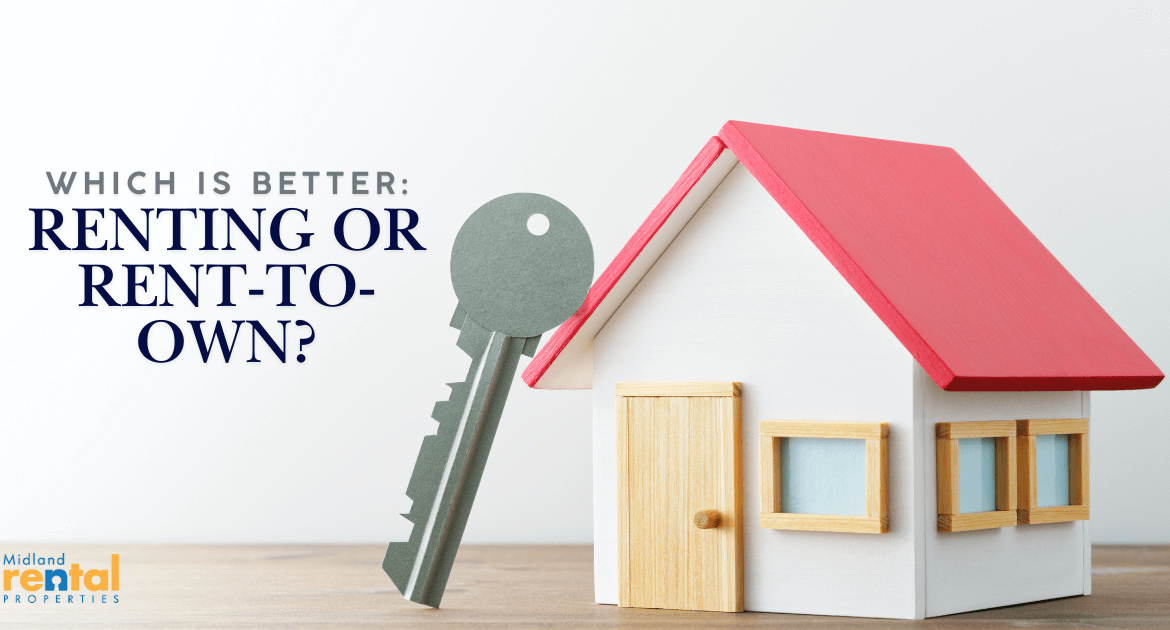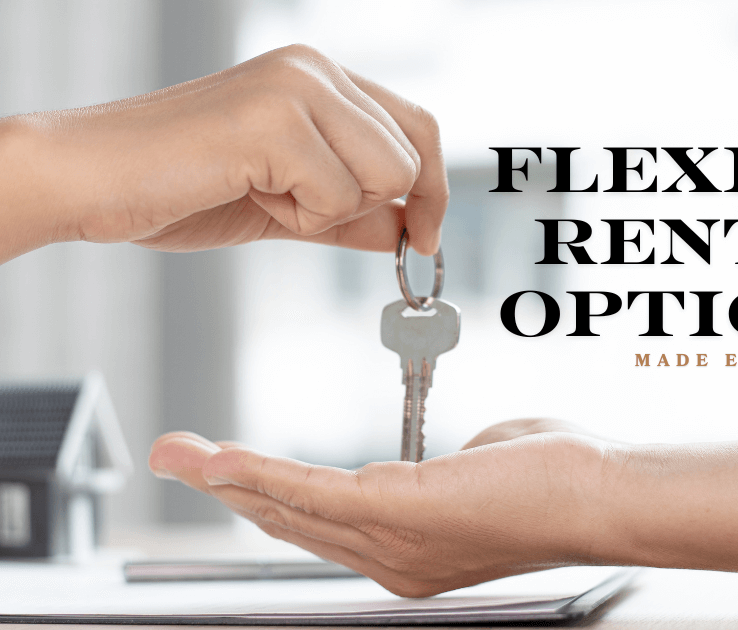When you’re looking for a place to live, one of the biggest decisions is whether to rent traditionally or explore a rent-to-own property. Both options can provide housing, but they set you on very different financial paths.
According to the U.S. Census Bureau, more than 30% of households in the United States rent their homes, and as housing prices continue to rise, interest in rent-to-own agreements is growing. These agreements are designed to give renters a pathway to homeownership while still providing the flexibility of leasing.
Imagine this: Sarah just moved to town for a new job and isn’t sure how long she’ll stay. Renting gives her flexibility without locking her into a mortgage. On the other hand, John and Maria know they want to stay in the area long-term but don’t have enough saved for a down payment. For them, a rent-to-own agreement might be the bridge between renting and buying.
If you’re weighing rent-to-own vs renting, this guide breaks down how each option works, the pros and cons, and real-life considerations to help you make the best choice.

What Does It Mean to Rent?
Renting is the most common way to secure housing. You pay a monthly fee to a landlord for the right to live in the property, usually under a lease that lasts 6–12 months. At the end of your lease, you can renew, move, or explore other housing options.
Pros of Renting:
- Lower upfront costs (usually just first month’s rent + security deposit)
- Flexibility to move after the lease ends
- Landlord handles maintenance and major repairs
- Good option if you’re uncertain about long-term plans
Cons of Renting:
- You don’t build equity or ownership
- Rent can increase when your lease renews
- Limited ability to customize or renovate
- Moving frequently can add costs (truck rentals, deposits, utility hookups)
Real Example: A teacher moving to a new school district might choose renting first to get to know the area before committing to a long-term home purchase.
Did You Know? As of 2025, the median rent for a two-bedroom apartment in the U.S. is around $1,400/month, though in high-demand cities like New York or San Francisco, rents can exceed $3,000.
Still weighing rent-to-own vs renting? Explore available properties in your area and see which option fits your budget and lifestyle best.
What Does Rent-to-Own Mean?
A rent-to-own property lets you rent a home with the option (or sometimes obligation) to buy it later. Your monthly rent may be higher than market average, but part of the payment often goes toward the purchase price.
How Rent-to-Own Agreements Work:
- You sign a lease that includes an “option to purchase.”
- You may pay an upfront option fee (typically 1–5% of the purchase price).
- A portion of your monthly rent is credited toward the future down payment.
- At the end of the contract (often 2–5 years), you decide whether to buy or walk away.
Pros of Rent-to-Own Properties:
- A way to build equity while renting
- Locks in today’s purchase price (beneficial if values rise)
- More time to improve credit or save for mortgage approval
- Allows you to live in the home before fully committing
Cons of Rent-to-Own Properties:
- Higher monthly rent than standard leasing
- Option fees are often non-refundable if you don’t buy
- You may be responsible for maintenance and repairs
- Risk if property value drops or financing doesn’t work out
Real Example: A couple saving for their first home might choose a rent-to-own deal where $300 of their $1,500 monthly rent goes toward the purchase price. Over 3 years, that’s $10,800 in credits applied to their down payment.
Important Note: Not every market has many rent-to-own properties, and the terms can vary widely. Availability depends heavily on your location.
Rent-to-Own vs Renting: Key Differences
Here’s a side-by-side look at the differences between renting options:
| Feature | Renting | Rent-to-Own |
|---|---|---|
| Ownership | No ownership | Option to buy later |
| Monthly Cost | Lower | Higher (rent + option fees) |
| Equity Building | None | Partial equity toward purchase |
| Upfront Costs | Security deposit + rent | Deposit + option fee |
| Flexibility | High, easy to move | Lower, tied to purchase contract |
| Maintenance | Landlord’s responsibility | Often shared or tenant’s |
| Commitment Level | Short-term | Long-term, usually 2–5 years |
| Risk Factor | Low | Medium to high (financing + fees) |
| Best For | Short-term housing, flexibility | Future homeowners, long-term planners |
Scenario: If you’re only in town for a 1-year work assignment, renting is the clear winner. If you’re ready to settle down but lack a full down payment, rent-to-own may help bridge the gap.
Which Option Is Right for You?
Deciding between renting options comes down to your goals:
- Choose Renting if…
- You value flexibility and may move within 1–2 years.
- You don’t want responsibility for major repairs.
- You’re saving for other goals, like paying off debt or building an emergency fund.
- Choose Rent-to-Own if…
- You know you want to buy in the same area.
- You need time to build your credit or savings.
- You want to lock in a purchase price before housing values increase further.
Scenario: Alex, a recent college graduate, rents an apartment while exploring job opportunities in different cities. Renting gives him mobility. Meanwhile, Lisa and Kevin, who just welcomed their first child, choose a rent-to-own property in the suburbs, giving them stability while they prepare for eventual ownership.
Hidden Considerations Before You Decide
- Credit Requirements: Even with rent-to-own, you’ll still need mortgage approval later. If your credit doesn’t improve, you could lose your option fee.
- Market Trends: Rent-to-own makes sense if prices are rising. If prices drop, you could end up overpaying.
- Maintenance Responsibilities: Renters usually call the landlord for repairs. In rent-to-own, you might be responsible for upkeep.
- Legal Terms: Contracts vary widely — always review the fine print with a real estate lawyer.
- Emotional Factor: Renting provides less permanence, while rent-to-own can give you a sense of ownership and stability before you even buy.
Looking for more than just pros and cons? Our team can help you compare real rent-to-own properties with traditional rentals so you make the right move.
FAQs: Rent-to-Own vs Renting
Is rent-to-own cheaper than renting?
Not usually. Rent-to-own properties often have higher monthly payments because part of your rent is applied toward the purchase price.
Do I get my option fee back if I don’t buy the home?
In most cases, no. Option fees are non-refundable if you walk away.
What happens if I can’t get a mortgage at the end of a rent-to-own agreement?
You could lose your option fee and any rent credits. It’s important to prepare in advance.
Can I negotiate rent-to-own agreements?
Yes — you may be able to negotiate the purchase price, option fee, or how much rent is credited toward ownership.
Are rent-to-own homes a good idea?
They can be if you’re serious about buying and need extra time to prepare. But if you’re uncertain about the future, renting is safer.
Can rent-to-own help me buy a home with bad credit?
Possibly. Rent-to-own can give you time to improve your credit, but you’ll still need mortgage approval when the purchase period arrives.
Final Thoughts: Rent-to-Own vs Renting
When it comes to rent-to-own vs renting, there’s no one-size-fits-all answer. Renting provides flexibility, lower upfront costs, and less responsibility — perfect if you need mobility. Rent-to-own properties, on the other hand, offer a pathway to homeownership if you’re not quite ready to buy outright but want to secure your future.
The best choice depends on your financial goals, lifestyle, and timeline. If you’re leaning toward rent-to-own, make sure you understand the contract terms, prepare your credit, and confirm it aligns with your long-term housing plans. For many renters, the right decision starts with comparing multiple renting options side by side and talking with a property manager or housing professional.
Ready to take the next step? Browse our available rentals or contact us today to learn more about rent-to-own options in your area.










1 Comment
Comments are closed.